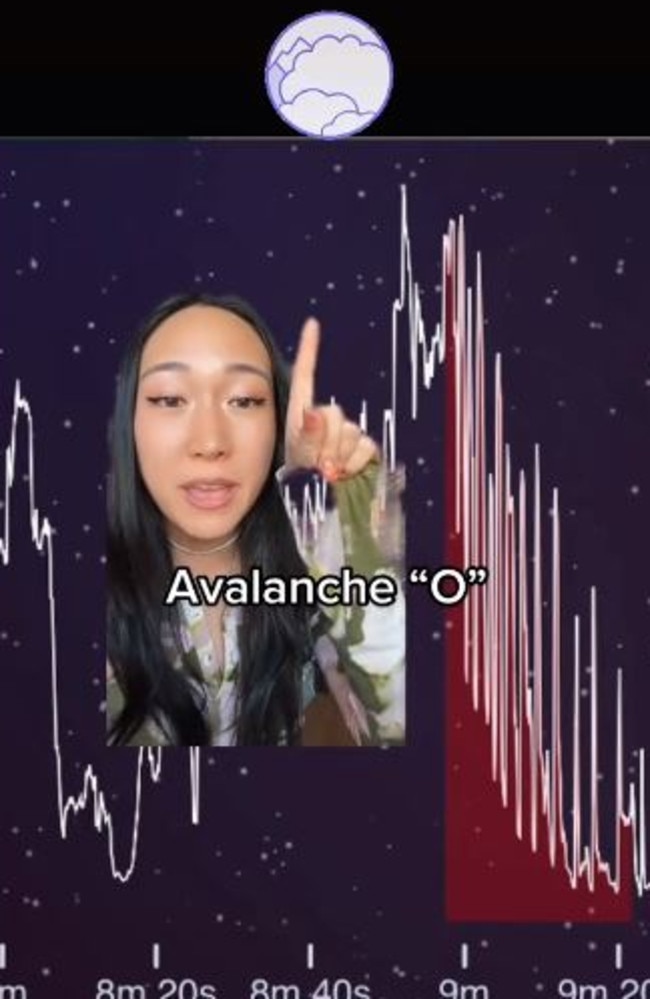Nadia Bokody: Study reveals three female ‘orgasm styles’
A new study has revealed women experience different orgasms, with sex columnist Nadia Bokody explaining all three. What one are you?

I’ll never forget the first time I saw it …
A woman climaxing on screen.
Her scream rang out so loudly through my then-boyfriend’s bedroom TV, it made the VHS player sitting atop it vibrate.
It might have been a bad nineties porn flick, but depictions of female sexual pleasure haven’t exactly improved more than two decades on.
RedTube and sites like it still lean into the spontaneous screeching orgasm trope (even though research has since proven moaning isn’t a reliable indicator of climax), and Hollywood sex scenes are typically punctuated by stylised back arching and lip biting that portray climax as a kind of uniform event.
In reality, getting off is a far more sophisticated and nuanced experience for people with vulvas.
In fact, a new study by Charles University in Prague has confirmed there’s not one singular way for vulva owners to have an orgasm. Researchers identified three different patterns of pelvic floor contractions that occur at the point of The Big O: The Wave, The Avalanche, and The Volcano.

These findings reinforce what sex scientists Masters and Johnson discovered back in the 1960s, when they conducted groundbreaking experiments with real people having real sex in labs, and monitored their responses, ultimately creating the now iconic ‘Sexual Response Cycle’, which breaks sex down into a four-phase model of physiological responses: excitement, plateau, orgasm, and resolution.
And it’s the orgasm part in particular – especially when applied to women, who tend to get off far less during partnered sex than men (at least, according to this study) – we’re really only just beginning to scratch the surface of understanding.
The Prague study, which recorded pelvic floor contractions while women self-pleasured using a Bluetooth vibrator designed to measure the frequency and intensity of those contractions, included just 54 participants, so it’s highly likely other varieties of orgasm are yet to be discovered.
But for now, at least, here are the three science says exist for sure …
1. The Wave
This orgasm feels exactly like it sounds: a wave of pleasure. Researchers describe it as a “short burst of pelvic contractions preceded by repeated pelvic floor tension and release”, in the study findings, which were recently published in The Journal of Sexual Medicine.


The Wave was also identified as the most common form of orgasm among vulva owners, with almost half the participants recording this pattern of tension and release during climax.
2. The Volcano
As the name suggests, this type of orgasm is defined by its more explosive nature. Rather than slowly building to an eventual release like The Wave, The Volcano orgasm involves sudden tension and an intense burst of release that occurs largely without warning.
It was also the least popular orgasm in the study, with a mere 11 participants recording a volcano-like climactic experience.

3. The Avalanche
This orgasm style features higher pelvic floor tension that lowers during climax in an intensely liberating way. Think: an intense “build” followed by a deliciously long, emancipating release, not dissimilar to an avalanche.
Given the group of participants for this study was small and the recordings were taken over just a handful of days, researchers plan to repeat it with more women, over a longer period.
“We are doing a long-term study,” one of the paper’s authors, neuroscience Professor James Pfaus said.
“[We want] to see how these different patterns are experienced subjectively as orgasms, as levels of pleasure, where the stimulation that induces them largely comes from.”
Perhaps it’s just me, but I don’t think they’ll have any trouble finding more women willing to sign up for the task of self-pleasuring in the name of science.
Follow Nadia Bokody on Instagram and YouTube for more sex, relationship and mental health content






